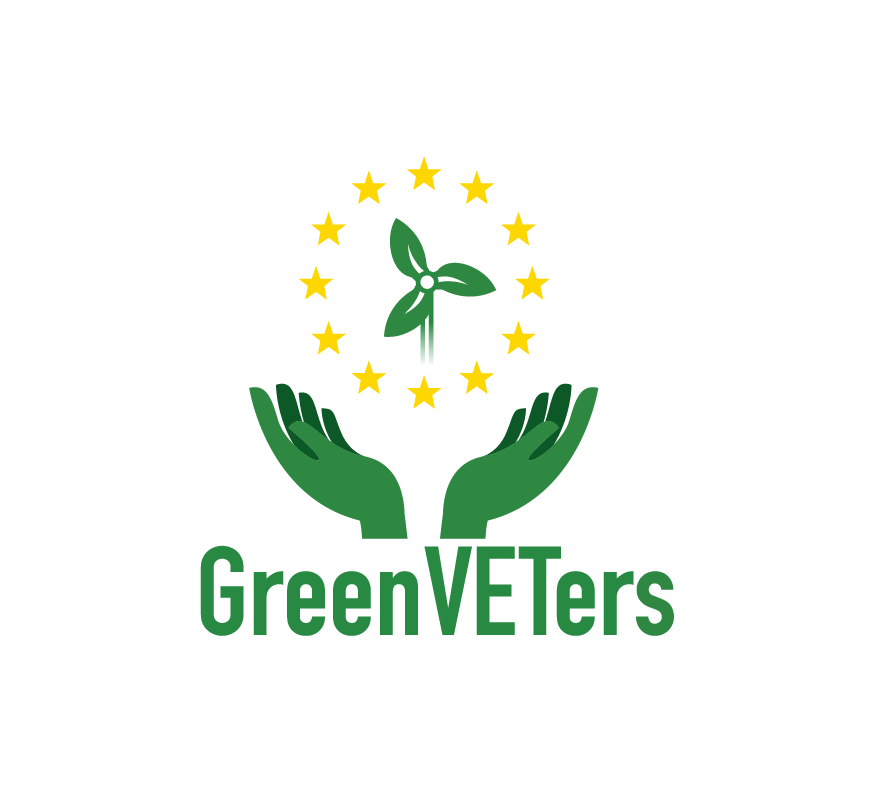You have probably realised by now, that the objectives of the GreenVETers project clearly support the objectives of the European Green Deal and the European Commission’s target to transform Europe into a carbon-neutral, fair, circular economy. That is, of course, the end goal. But how does the European Commission practically achieve this target? The European Green Deal, announced in December 2019, has had to cover all economic sectors, including transportation, energy, agriculture, construction, and the industries of steel, cement, ICT, textiles, and chemicals.
There is a number of Regulations, Plans and Strategies under the umbrella of the European Green Deal, some of which are outlined below. The objectives of the following are more thoroughly explained in the first Project Result of GreenVETers, the Handbook on the Green Deal and Citizen Deliberation.
- The EU Circular Economy Action Plan (CEAP) was created aiming to increase global competitiveness, promote sustainable economic growth, and create new jobs. The CEAP focuses on resource-intensive industries with strong circularity potential, with the goal of keeping resources in economic cycles for as long as feasible.
- The Regulation on Eco-design for Sustainable Products (ESPR) addresses the fact that product design can account for up to 80% of a product’s environmental impact. ESPR establishes new standards for the product design phase focusing on product durability, dependability, reusability, reparability, ease of maintenance, refurbishment, recycling, and energy efficiency.
- The “Farm to Fork Strategy” was established to ensure that agriculture, fisheries, aquaculture and the food value chain correctly contribute to the goal of a climate-neutral EU by 2050. The Strategy addresses food safety and affordability, the minimisation of pesticide use, the promotion of organic farming, the reduction of food waste and loss and the improvement of animal welfare.
- The 2030 Biodiversity Strategy is a thorough, ambitious long-term plan aiming for the preservation of the environment, the prevention of ecosystem loss and the restoration of Europe’s biodiversity by 2030.
- The Zero Pollution Action Plan serves as a guide mainly for the integration of pollution prevention into all pertinent EU programs. The plan contains goals for waste production, biodiversity, and pollution of the air, water, soil, and noise.
Furthering these measures, the European Commission unveiled and adopted the “Fit for 55” package in 2021. The package’s name refers to the EU’s target of reducing its net greenhouse gas emissions by at least 55% by 2030 compared to 1990 net emissions. The package provides a set of legislative proposals intended to modernise existing legislation, adapt it to the EU’s 2030 climate target, and introduce new policies that will help bring much-needed transformative changes in the economy, society, and industry.
The main challenge in successfully implementing the plans, strategies, and regulations of the European Green Deal is maintaining the priority of policy planning throughout the extended implementation period in both the European and the national contexts. Yet, the COVID-19 pandemic, almost simultaneous to the announcement of the Green Deal, has shifted the focus from implementing the Deal’s policies to controlling this health emergency and battling the immense global economic slowdown that ensued.
However, the European Commission has not shied away from the practical economic aspects of the Green Deal. The Commission, via the Green Deal, has provided a blueprint describing the financial resources that must be invested in, the financing options available and the pathway to ensure a fair and equitable transition. In this way, the European Green Deal became Europe’s “lifeline out of the COVID-19 pandemic”.

References
A European Green Deal. (2019). European Commission – European Commission. Retrieved November 3, 2022, from, https://ec.europa.eu/info/strategy/priorities-2019-2024/european-green-deal_en
European Commission. (n.d.) Farm to Fork Strategy. Food Safety. Retrieved November 3, 2022, from https://food.ec.europa.eu/horizontal-topics/farm-fork-strategy_en
European Commission. (2019). COMMUNICATION FROM THE COMMISSION TO THE EUROPEAN PARLIAMENT, THE EUROPEAN COUNCIL, THE COUNCIL, THE EUROPEAN ECONOMIC AND SOCIAL COMMITTEE AND THE COMMITTEE OF THE REGIONS The European Green Deal (52019DC0640). Brussels, COM(2019) 640 final. Retrieved November 3, 2022, from https://eur-lex.europa.eu/legal-content/EN/TXT/?uri=CELEX:52019DC0640
European Commission (2022) Biodiversity strategy for 2030. Environment. Retrieved November 2, 2022, from, https://environment.ec.europa.eu/strategy/biodiversity-strategy-2030_en
European Commission. (2022). COMMUNICATION FROM THE COMMISSION TO THE EUROPEAN PARLIAMENT, THE COUNCIL, THE EUROPEAN ECONOMIC AND SOCIAL COMMITTEE AND THE COMMITTEE OF THE REGIONS On making sustainable products the norm (52022DC0140). Brussels, COM(2022) 140 final. Retrieved November 3, 2022, from https://eur-lex.europa.eu/legal-content/EN/TXT/?uri=CELEX:52022DC0140
European Commission. (2022). Zero pollution action plan. Environment. https://environment.ec.europa.eu/strategy/zero-pollution-action-plan_en
European Commission, Directorate-General for Communication. (2020). Circular economy action plan: for a cleaner and more competitive Europe, Publications Office of the European Union. https://data.europa.eu/doi/10.2779/05068
Fetting, C. (2020). The European Green Deal. ESDN Report, December 2020, ESDN Office, Vienna. https://www.esdn.eu/fileadmin/ESDN_Reports/ESDN_Report_2_2020.pdf
Siddi, M. (2020). The European Green Deal: Assessing its current state and future implementation. FIIA Working Paper Series, 114. https://www.fiia.fi/en/publication/the-european-green-deal





